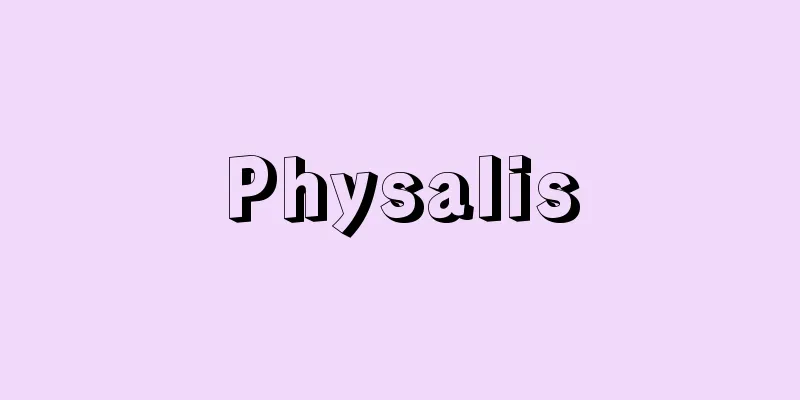Smoking - Kitsuen (English spelling)

|
Smoking is difficult to quit because it is a mental illness called nicotine addiction. Along with opiates, cannabis and cocaine, tobacco addiction is classified as a "mental and behavioral disorder". When regular smokers quit, they experience symptoms of nicotine such as cravings for cigarettes, irritability, difficulty concentrating, anxiety, restlessness, and hunger. "I've been cutting down on the number of cigarettes I smoke recently for the sake of my health" is a phrase we often hear. It's certainly a good idea to do so rather than mindlessly puffing away as much as you want. However, it is known that when people cut down on the number of cigarettes they smoke, they tend to inhale more deeply or smoke all the way to the end of the cigarette. Also, even if you cut down on the number of cigarettes you smoke, you are still taking in harmful substances into your body. Reasons why you can't quit smokingIt has been reported that the majority of smokers want to quit smoking or cut down on their smoking. However, in reality, many people give up from the start, thinking, "I can't quit smoking anyway," or are afraid of the anxiety and sense of loss they will feel if they quit. In addition, it is probably true that many people really want to quit, but don't want to quit because someone else tells them to. This is not a matter of having a particularly weak will or being too proud. You cannot seriously try to quit smoking because you have not clearly defined your purpose for quitting smoking. To strengthen your resolve to quit smoking, it is important above all to acquire correct knowledge about tobacco and understand how harmful smoking is, while at the same time focusing on what you can gain by quitting smoking. Another unexpectedly big obstacle in the process of quitting smoking is the temptation from fellow smokers. Many people seem to be tempted by words such as "Quitting smoking will only make you more stressed" or "My grandfather smoked until he was 80 years old, but he was healthy" and end up reaching for a cigarette. In order to avoid succumbing to such temptations, the shortcut to success is to have a strong motivation to quit smoking. Understanding nicotine addictionThe Fagerstrom Nicotine Dependence Test (Table 16) is a simple method for assessing the degree of dependence on tobacco (nicotine). The higher the dependence, the more difficult it becomes to quit smoking on your own. Effects after quitting smokingIt is important to know the extent to which quitting smoking reduces the risk of contracting a disease (Table 17) in order to actually quit smoking. Please remember this when you feel like giving up. What to do before you start quitting smokingFirst, when you quit smoking, keep a smoking diary to record the circumstances and times when you smoked. This will help you understand when and under what circumstances you smoke. Second, write down why you want to quit smoking so you can refer to it whenever you want. If your motivation is not clear, you will forget your purpose and start smoking again. Third, write down the benefits of quitting smoking on paper so that you can review them whenever you like. By checking the benefits you can enjoy by quitting smoking, you will strengthen your resolve to quit smoking. Fourth, be aware that when you first quit smoking, you will experience withdrawal symptoms due to nicotine withdrawal. These include an overwhelming desire to smoke, anxiety, irritability, fatigue, dry mouth, and a fuzzy head. Knowing in advance that these symptoms will appear will help reduce anxiety. How to Quit SmokingThere are two ways to quit smoking: quitting all at once, or gradually reducing your smoking. Which method is more suitable depends on the individual. With the smoking reduction method, you first cut down to 10 cigarettes or less a day, and then quit all at once. If you absolutely cannot do this, you can continue to reduce more gradually. Smoking cessation aids nicotine Smoking cessation is achieved through the individual's own will, and nicotine replacement therapy is considered a "support" to help with that. Therefore, the most important prerequisite for quitting smoking is the desire to quit smoking and sufficient motivation, and smoking cessation aids alone will not be enough to succeed. Nicotine gum Nicotine-containing gum preparations are available over the counter at pharmacies. Nicotine gum therapy is a form of nicotine replacement therapy that makes it easier to quit smoking, and provides nicotine through the gum. One piece of nicotine gum contains 2 mg of nicotine, which is gradually absorbed through the oral mucosa over 30 minutes, resulting in a blood nicotine concentration that is about half that of smoking a single cigarette. When you feel like smoking, slowly place one piece in your mouth for about 30 minutes. Usually, you start with 6 to 12 pieces a day, and gradually reduce the amount you use each day. Stop when you are down to 1 to 2 pieces a day. Nicotine patch Nicotine patches are patches that contain nicotine and are attached to the skin, allowing the nicotine to be absorbed into the body through the skin. Because it is absorbed through the skin, it is slower acting than nicotine gum, and does not give you the feeling of smoking a cigarette. The patches come in three different sizes (doses) depending on the amount of medication they contain, and the larger size is used for the first 1-6 months after you start quitting smoking, after which you switch to smaller patches and finally stop smoking. Takashi Wada "> Table 16 Nicotine Dependence Test "> Table 17. Effects of quitting smoking Smoking restrictions |
|
喫煙はなかなかやめることができません。それは、喫煙がニコチン依存症という精神疾患の一種だからです。アヘン、大麻、コカインと並んで、たばこの依存症は「精神および行動の障害」という疾病分類に入っています。 常習喫煙者が禁煙すると、たばこへの渇望、短気、集中困難、不安、落ち着きのなさ、空腹などのニコチン 「最近、健康のためにたばこの本数を減らしているんだ」とはよく聞く言葉です。確かに、何も考えずに好きなだけスパスパふかすよりは、心がけとしてはいいでしょう。しかし、本数を減らした場合、たばこをこれまでより深く吸う、あるいは根元まで吸うことが知られています。また、本数を減らしたところで、有害物質を体に取り込んでいることに変わりありません。 禁煙できない理由喫煙者の過半数は、喫煙あるいは節煙したいと思っているという報告があります。しかし、実際には「どうせ自分には禁煙なんてできない」と最初からあきらめてしまったり、やめた時に感じる不安感、喪失感を恐れて禁煙に踏み切れない人も多いようです。また、本当はやめたいけれど、他人からいわれてやめるのはいやだというのも正直な気持ちでしょう。 これは別に、意志が特別弱いとか、プライドが高すぎるという問題ではありません。「禁煙の目的を明確にしていない」から、本気で禁煙に取り組むことができないのです。 禁煙に取り組む意志を強くするには、何よりも、たばこに関する正しい知識を身につけ、喫煙の害がいかに大きいかを知ると同時に、禁煙によって何を得るかに目を向けることが大切です。 また、たばこをやめる過程で意外にも大きな障害になるのが、スモーカー仲間の誘惑です。「たばこをやめるとかえってストレスになる」とか、「おれの祖父は80歳までたばこを吸っていたが元気だった」などの誘い言葉にのって、ついついたばこに手を伸ばしてしまう人も多いようです。こんな誘惑に負けないためにも、強い動機をもって禁煙に臨むことが、成功への近道といえるでしょう。 ニコチン依存状態を知るたばこ(ニコチン)に対して、どのくらい依存しているかを手軽に評価できる方法として、ファガストロームのニコチン依存度テスト(表16)があります。依存度が高いほど自力での禁煙は難しくなります。 禁煙後の効果禁煙することで、その病気にかかる危険性がどの程度低下するか(表17)を知っておくことは、禁煙を実行するうえで重要です。挫折しそうになったら思い出すようにしてください。 禁煙を始める前に行うこと第1に、禁煙にあたっては、それまでの喫煙する時の状況や時間などを喫煙日記として書いておきます。これにより、自分がいつ、どのような状態でたばこを吸うのかがわかります。 第2に、なぜ喫煙をやめるのかを紙に書いて、いつでも再確認できるようにしておきます。動機が明確でないと、禁煙の目的を忘れて、再びたばこを吸い始めることになります。 第3は、禁煙によるメリットを紙に書いて、いつでも再確認できるようにします。禁煙によって享受できるメリットを確認することで、禁煙の意志を強固なものにします。 第4は、禁煙当初、ニコチン切れによる離脱症状が現れることを知っておきます。離脱症状には、たまらなく吸いたい、不安、怒りっぽい、だるい、口が乾く、頭がボーッとするなどです。このような症状が現れることを事前に知っておくことで、不安は軽減されます。 禁煙方法たばこを一気にやめる断煙法と、少しずつ減らす節煙法があります。どちらが適しているかは個人差があります。節煙法では、まず1日10本以下になるように減らしていき、そこから一気に断煙します。どうしてもできない場合は、さらに少しずつ減らしていきます。 禁煙補助剤 ニコチン 禁煙はあくまで本人の意志によって達成されるもので、ニコチン置換療法はそれを助ける「補助」と位置づけられます。したがって、禁煙達成のためには、禁煙したい気持ちと十分な動機が大前提であり、禁煙補助剤だけでは成功しません。 ●ニコチンガム ニコチン含有ガム製剤が薬局でも購入できます。ニコチンガムを用いた治療法は、禁煙を容易にするニコチン置換療法のひとつであり、ニコチンガムからニコチンを供給する方法です。 ニコチンガム1個には、2㎎のニコチンが含まれ、30分かけて徐々に口腔粘膜から吸収され、たばこを1本吸った時の約半分の血中ニコチン濃度が得られます。たばこを吸いたくなったら、1個をゆっくりと約30分口の中に入れます。通常、1日6~12個から始め、1日の使用量を徐々に減らしていきます。1日1~2個となった段階で終了します。 ●ニコチンパッチ ニコチンパッチは、ニコチンを含んでいるパッチを皮膚に貼付し、皮膚からニコチンを体内に吸収させるものです。皮膚吸収のため、ニコチンガムに比べ遅効性であり、また、たばこを吸った気分は得られません。 パッチには含有量によって3種類の異なる大きさ(用量)があり、禁煙を開始して1~6カ月間は大きなシールを使います。その後、少量のパッチに替えていき、最後に離脱します。 和田 高士 "> 表16 ニコチン依存度テスト "> 表17 禁煙による効果 喫煙
|
>>: Kitchen ring - Kitchen ring
Recommend
Sandrokottos
…His origins are not consistent among the legends...
Kamikaze Special Attack Force - Kamikaze Special Attack Force
A special attack force organized by the Imperial J...
Caelestius
…After the fall of Rome to the Visigoths in 410, ...
Azollaceae - Red duckweed
…A small, floating, herbaceous fern of the Azolla...
Tokiwa no Kuni - The Land of Everlasting Life
The name of a country that appears in medieval nar...
Large intestine
The large intestine is the part of the digestive ...
Shoji Sekine
Western-style painter. Along with Murayama Kaita,...
Rodgers, J.
...English folk songs, which had been handed down...
absinthin
…Absinthe is made by adding fragrance to the leav...
Izawa Iekage
Year of death: Kenpo 3.3.12 (1215.4.12) Year of bi...
Main household - Shuko (English spelling) zhu-hu; chu-hu
Refers to landowners in the Song Dynasty of China....
Cowherd boy - Ushikaiwara
〘 noun 〙 A person who drives an ox cart . They hav...
Nuffar
…An ancient city in southern Mesopotamia. Its cur...
Cast steel
...Grain refers to a structure in which graphite ...
Diu
…It is located at the southern end of the Konkan ...









